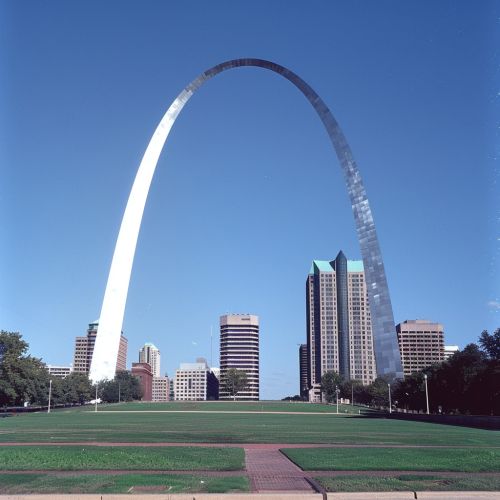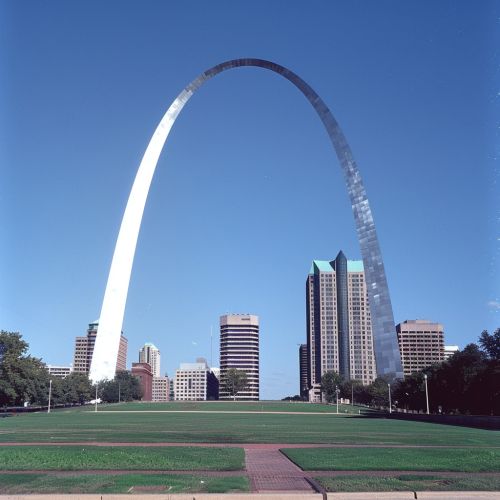St. Louis
History
St. Louis, Missouri, is a city with a rich and complex history that dates back to its founding in 1764 by French fur traders Pierre Laclède and Auguste Chouteau. The city was named after King Louis IX of France. Initially, it served as a major port on the Mississippi River and became a hub for trade and migration, particularly during the westward expansion of the United States.
Early Settlement
The area that is now St. Louis was originally inhabited by Native American tribes, including the Mississippian culture, which built large earthen mounds. European settlers arrived in the mid-18th century, with the French establishing a trading post. The city's strategic location made it a focal point for trade, particularly in furs.
Louisiana Purchase
In 1803, the United States acquired the territory of Louisiana from France in the Louisiana Purchase, which included St. Louis. This acquisition significantly boosted the city's growth and development, transforming it into a gateway for westward expansion.
19th Century Growth
Throughout the 19th century, St. Louis grew rapidly. The city became a major industrial center, with industries such as brewing, manufacturing, and transportation flourishing. The construction of the Eads Bridge in 1874, the first steel bridge across the Mississippi River, symbolized the city's industrial prowess.
20th Century Developments
The 20th century saw St. Louis continue to grow and diversify. The 1904 World's Fair, also known as the Louisiana Purchase Exposition, showcased the city's cultural and technological advancements. However, the latter half of the century brought challenges, including economic decline and population loss.
Geography
St. Louis is located in the eastern part of Missouri, along the western bank of the Mississippi River. The city's geography is characterized by its riverfront location, rolling hills, and diverse neighborhoods.
Climate
St. Louis experiences a humid subtropical climate, with hot summers and cold winters. The city is prone to severe weather, including thunderstorms, tornadoes, and occasional flooding.
Natural Features
The Mississippi River is the most prominent natural feature in St. Louis, serving as a vital waterway for transportation and commerce. The city is also home to several parks and green spaces, including Forest Park, one of the largest urban parks in the United States.
Demographics
St. Louis has a diverse population, with a rich cultural heritage influenced by various immigrant groups.
Population
As of the 2020 census, the population of St. Louis was approximately 301,000. The city has experienced significant demographic shifts over the years, with periods of population growth and decline.
Ethnic Composition
St. Louis has a diverse ethnic composition, with significant African American, Caucasian, and immigrant communities. The city has a rich cultural tapestry, influenced by German, Irish, Italian, and Bosnian immigrants, among others.
Socioeconomic Factors
St. Louis faces various socioeconomic challenges, including income inequality, poverty, and disparities in education and healthcare. Efforts are ongoing to address these issues and promote economic development and social equity.
Economy
St. Louis has a diverse economy, with key industries including manufacturing, healthcare, education, and finance.
Major Industries
The city is home to several major corporations, including Anheuser-Busch, Boeing, and Emerson Electric. The healthcare sector is also significant, with institutions like Barnes-Jewish Hospital and Washington University School of Medicine playing a crucial role.
Economic Challenges
Despite its economic strengths, St. Louis faces challenges such as job loss, economic disparity, and the need for economic diversification. Efforts are being made to attract new industries and promote innovation and entrepreneurship.
Culture
St. Louis has a vibrant cultural scene, with a rich history of music, art, and cuisine.
Music
St. Louis has a storied musical heritage, particularly in blues, jazz, and ragtime. The city is known for its contributions to these genres, with legendary musicians like Scott Joplin and Miles Davis hailing from St. Louis.
Arts and Museums
The city boasts numerous cultural institutions, including the St. Louis Art Museum, the Missouri History Museum, and the Contemporary Art Museum St. Louis. These institutions offer a wide range of exhibitions and programs that reflect the city's diverse cultural heritage.
Cuisine
St. Louis is known for its unique culinary traditions, including St. Louis-style pizza, toasted ravioli, and gooey butter cake. The city's food scene is a reflection of its diverse cultural influences and offers a wide range of dining experiences.


Education
St. Louis is home to several prestigious educational institutions, ranging from primary schools to universities.
Higher Education
The city is renowned for its higher education institutions, including Washington University in St. Louis and Saint Louis University. These universities are known for their research programs and contributions to various academic fields.
Public and Private Schools
St. Louis has a mix of public and private schools, offering a range of educational opportunities. The St. Louis Public Schools district serves the city's public school students, while numerous private and parochial schools provide alternative education options.
Transportation
St. Louis has a comprehensive transportation network, including roads, public transit, and airports.
Roads and Highways
The city is served by several major highways, including Interstate 70, Interstate 64, and Interstate 55. These highways connect St. Louis to other major cities and regions.
Public Transit
Public transportation in St. Louis is provided by the Bi-State Development Agency, which operates MetroLink light rail and MetroBus services. These services offer convenient and affordable transportation options for residents and visitors.
Airports
St. Louis Lambert International Airport is the primary airport serving the city, offering domestic and international flights. The airport is a major hub for air travel in the region.
Sports
St. Louis has a rich sports history and is home to several professional and collegiate sports teams.
Professional Sports
The city is home to the St. Louis Cardinals (MLB) and the St. Louis Blues (NHL). These teams have a passionate fan base and have achieved significant success in their respective leagues.
Collegiate Sports
St. Louis is also known for its collegiate sports programs, particularly those of Washington University in St. Louis and Saint Louis University. These programs compete in various sports and have a strong tradition of excellence.
Government and Politics
St. Louis has a unique governmental structure and a dynamic political landscape.
City Government
The city operates under a mayor-council form of government, with the mayor serving as the chief executive and the Board of Aldermen serving as the legislative body. The city is divided into 28 wards, each represented by an alderman.
Political Landscape
St. Louis has a diverse political landscape, with a history of political activism and engagement. The city has been a focal point for various social and political movements, including civil rights and labor rights.
Notable Landmarks
St. Louis is home to several iconic landmarks that reflect its rich history and cultural heritage.
Gateway Arch
The Gateway Arch is perhaps the most recognizable symbol of St. Louis. Completed in 1965, the arch stands 630 feet tall and serves as a monument to the westward expansion of the United States.
Old Courthouse
The Old Courthouse is another significant landmark, known for its role in the Dred Scott case, a pivotal moment in the history of civil rights in the United States.
Forest Park
Forest Park is one of the largest urban parks in the United States and is home to several cultural institutions, including the St. Louis Zoo, the St. Louis Art Museum, and the Missouri History Museum.
